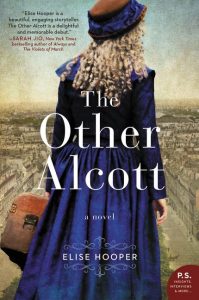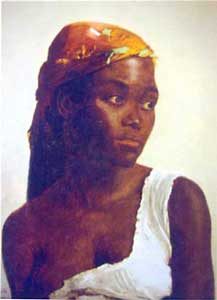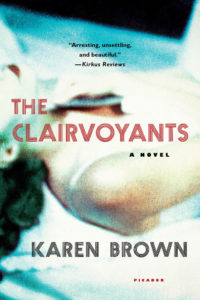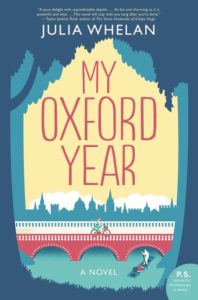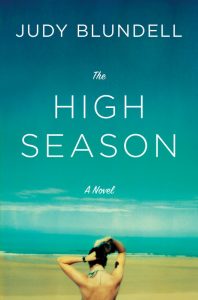 How wealth destroys (Long Island, New York; present-day): A wave of big summer books has arrived. How to choose when so many look so inviting? An opening line? Readers of this blog know that often does it for me:
How wealth destroys (Long Island, New York; present-day): A wave of big summer books has arrived. How to choose when so many look so inviting? An opening line? Readers of this blog know that often does it for me:
“Every summer Ruthie gave away her house by the sea” kicks off The High Season, instantly drawing us in. Just a few words – penned by National Book Award-winning YA author Judy Blundell, her first foray into the adult genre – convey a lot.
They give us a sense of time and place, at some presumably prized water setting. The tone sounds regretful, even resentful. We can imagine reasons why Ruthie might chronically vacate her waterfront home during the most valued season of all, but we’re curious to know Ruthie’s.
Besides piquing our interest, Blundell gives us a glimpse into her novel’s pernicious theme on our intensifying ends-justifies-the-means culture valuing money over ethics, honesty, decency.
By setting up an unsuspecting, earnest protagonist in a fast-trending locale, we’re wickedly reminded that even the nicest of us can be terribly burned by people we thought we could trust.

Orient Point Lighthouse
By Rob4958 [CC BY-SA 4.0]
from Wikimedia Commons
Ruthie was an artist, a painter who cut her teeth in a Manhattan studio working for a misogynist, iconic artist now deceased. For the past seven years, she’s been doing a terrific job as the director of a small local museum showcasing artifacts of Benedict Arnold and, thanks to Ruthie, contemporary art installations.
The Belfry Museum is fictionalized, as is nearly everything else in the novel, though the author has had a front row seat observing regional museum life as her husband is the Executive Director of a real one, located elsewhere on Long Island. This interesting tidbit, mentioned in the Acknowledgements, helps explain how she twisted a museum board from the “exemplary examples of commitment and principle” of the “ninety-nine percent of the board members I’ve known or heard about” into an unethical, treacherous bunch.
Enter sensible from modest means, caring Ruthie, who didn’t see under “all that shabby hid a secret life of the moneyed, serious culture class.” She didn’t expect the raw deal, actually several, coming. Why should she? She lives on an idyllic “narrowest ribbon of land, where light bounced from bay to sound and the air was seasoned with salt.” A laid-back place of “farm stands on real farms,” of “pies and parades,” with a country store that sells “the greatest salted oatmeal cookie in the world.” But times they are a changin.
Ruthie adores her home, but rents it out every summer to keep it, secure a nest egg, and save for her beautiful, fifteen-year-old daughter’s college education. Jem, on the other hand, is put out by the “summer bummer,” at an age when she’s dealing with teenage angst heard through doozies of email phone messages. She’s the second female voice telling this cautionary tale.
Ruthie says she “married her best friend.” She and Michael have reverently renovated a 19th century farmhouse he inherited. Today it “breathed in peace and lemons” near a picture-postcard village. Perfect? Of course not.
Ruthie and Mike have been separated for the past three years. They’ve managed to keep their family intact as best they can, especially for Jem’s sake. Mike is a carpenter who lives in town, a former artist too, an abstract painter who couldn’t make a career go of it. Somewhere along the line the perennial renting out turned a home into merely an investment property. All the re-settling has unsettled Mike, a live-and-let-live kind of guy. Handsome, he’s another of a string of beautiful-looking, dissatisfied characters.
A third female voice – Doe’s – serves as the epitome of what’s wrong with social media. Handy with her camera, she’s reinvented herself with a cunning strategic goal aimed at growing her Instagram followers because all she cares about is money no matter who gets hurt. Concocting lie after lie to get what she’s after, she’s one of many entangled characters. Doe works part-time at the museum.
Ruthie you’ll like despite what she gets herself into – innocently, accidentally, and by design. We root for her because she’s one of the very few good, genuine people in this “spinning world.” The other is an old beau she bumps into at one of those nostalgic farm stands. Head-turning too, but this guy oozes kindness. Both stand out in a cast of unlikeable trouble-makers filling over 400 pages.
Adeline Clay is this year’s summer renter. Rich and “visible,” she doesn’t fit the Orient Point mold, but that’s about to be broken. “Well known as one of New York’s most stylish older women,” her clothes and demeanor wreak: “I am rich, and this is appropriate summer attire, because this is as beachy as I’m willing to get.”
What’s she doing in a place where “the dress code was old sneakers”? She says she’s come for some peace and quiet. How’s that possible when she was married to that misanthrope painter, Ruthie’s nemesis? Her past will come back to bite her.
Her new boyfriend, Daniel Mantis, is a repugnant, cheating billionaire, a “financial raider.” He owns an ultra-modern, minimalist Hamptons home featuring his priceless collection of abstract art.
Daniel is the father of two twenty-something spoiled brats. Lucas, the younger one, may be “the hottest guy I’ve ever seen,” Jem types into her phone to impress her in-crowd friends. He can’t stand Adeline, but he also carries around profound anger for his late mother, affecting how he treats all females. His older sister, Lark, has her own issues. Beware of them all, Ruthie!
Besides beauty that fools, money and the power it affords, art binds these bad actors together. Ruthie’s board members are another worrisome lot. Some supposedly friends, including her closest friend, Carole. Jet-setting off to spend the summer in France, her empty guesthouse quarters treat Ruthie and Jem to a rare make-the-best-of-it place, also at a steep price.
Everything happens during one momentous summer. Chapters are organized around the summer holidays. Clever headings like Independence Day when Ruthie breaks loose, and Bastille Day when there’s a revolution of sorts.
An epilogue lets us know how Ruthie picks up the pieces after things fall apart, too many things Ruthie cherishes. For a while, she loses it badly, snaps. We want to forgive her since she’s been sabotaged. Though Mike can’t get over how “you were never mean like this.” And didn’t he count on that? Didn’t everyone, she reflects.
Jem’s online presence isn’t meant to be pretty. A good kid, she gets herself into trouble as she’s awfully vulnerable. Blundell clearly knows what makes this insecure YA crowd tick.
Why are we obsessed with the rich and famous? Do we really believe they have it all? The recent, shocking suicides of Anthony Bourdain and Kate Spade should convince us for once and for all that money/glamour/celebrity do not buy happiness.
Rather than dwell on the sorrowful, The High Season lets us see what’s sadly missing in this slice of a shameless super-rich world, dishing out serious fun, meaningfully. Big in more ways than one.
Lorraine
